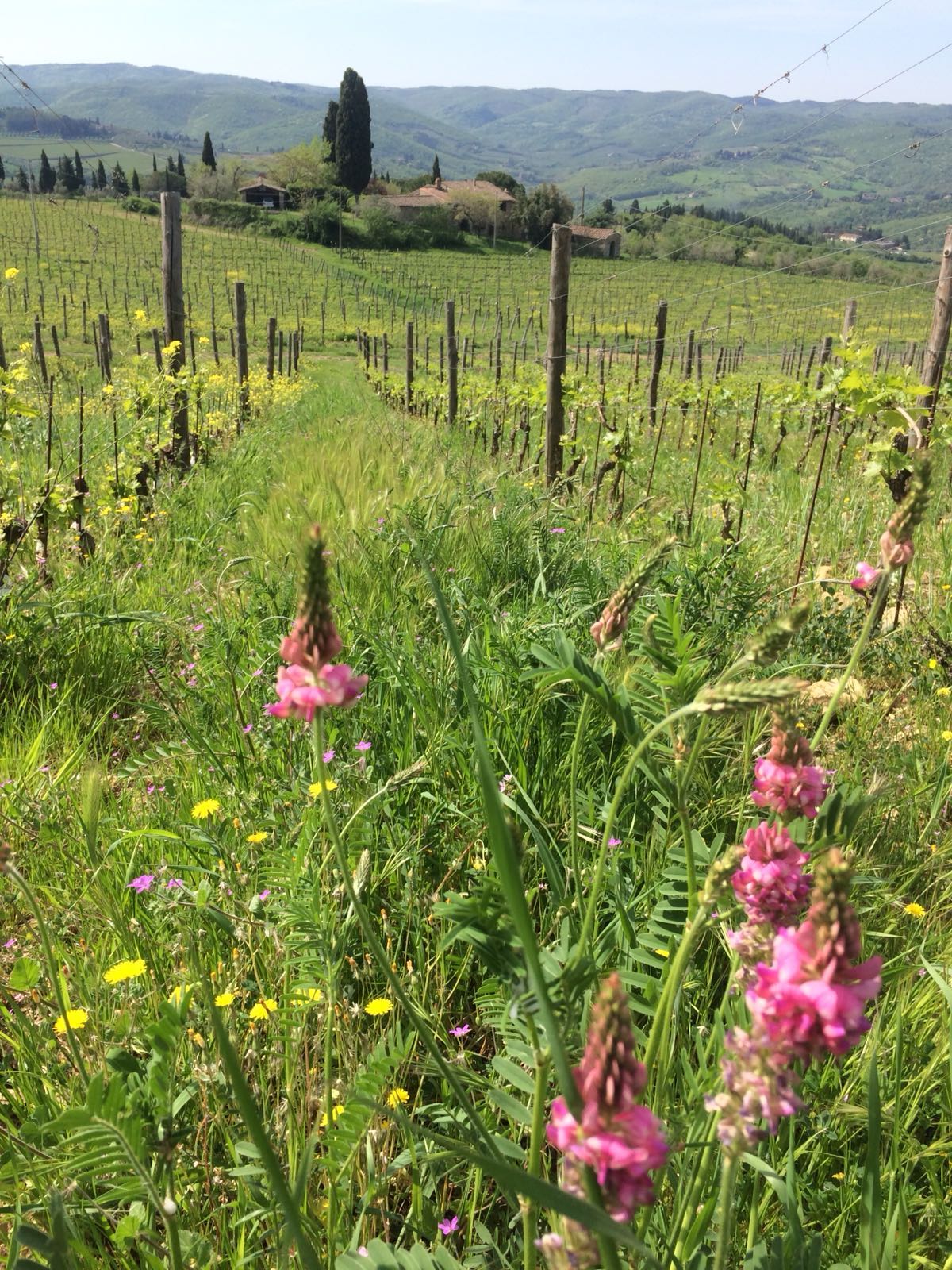Ever since we began making wine at Gagliole our working practices have been highly sensitive and respectful to the land, at first choosing to follow the principles of integrated agriculture and, since 2016, converting to organic farming.
One of the farming methods that aims not only to improve a crop’s production performance but also to increase the biodiversity of the environment in which it is located, is the green manure method. Thanks to this technique, we can maintain healthy, viable and weed-free soil.
Green manure is an agricultural practice that entails sowing pure plants or herbs (all the same kind) in the vineyard rows, or different plants and herbs (a mix of grasses), which are then cut during the spring.
The main aim of green manure in the vineyard is to improve soil fertility, but there are also many other benefits such as weed control, erosion containment, improvement of organic matter content, soil structure and porosity, and the attraction of beneficial insects such as bees and other general pollinators.
At the end of the annual Gagliole harvest, before the onset of the autumn rains, we choose what type of manure to sow based on the soil’s needs. The choice of the type of planting to be carried out is particularly important because the accurate selection of species allows us to provide each individual kind of soil with the nutrients it needs.
Among the most suitable species are legumes, which provide significant quantities of nitrogen and meet the needs of the vineyards, thanks to their ability to fix atmospheric nitrogen through bacteria located in their root system.
Along with legumes, a mixture of grasses such as oats and barley, and crucifers such as rapeseed and mustard can be sown, which create a very stable humus that significantly improves soil structure. Crucifers are also useful in the fight against nematodes – vine root pests.
The plants are cut at the peak of their growth, i.e., just before flowering, when the stems are not yet well lignified. They are mowed, to form a mass of vegetation that remains in the middle of the rows to protect the soil.
This system is known as “soil mulching” – an age-old agricultural practice that limits weed growth, conserves good hydration and prevents erosion.


